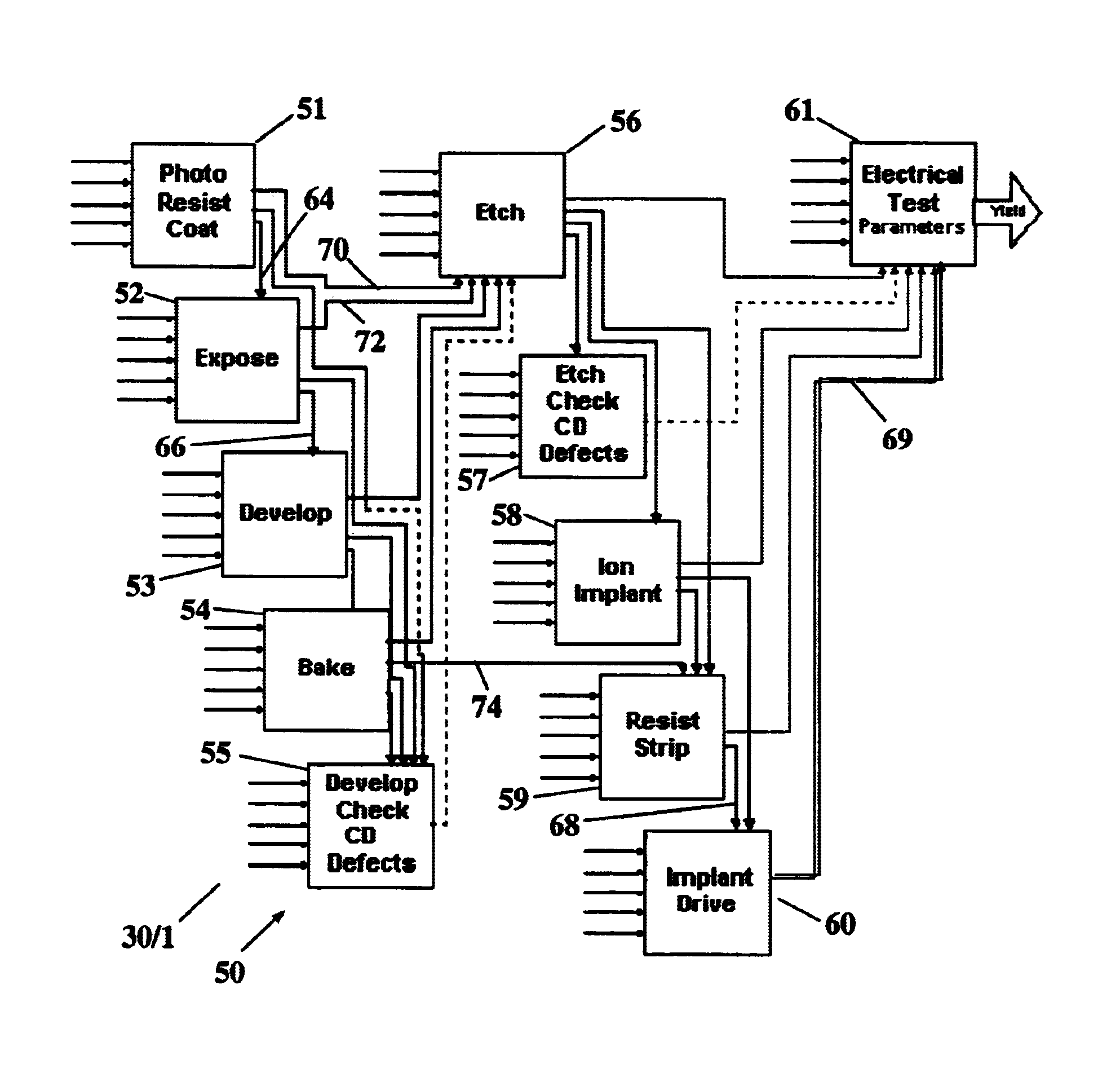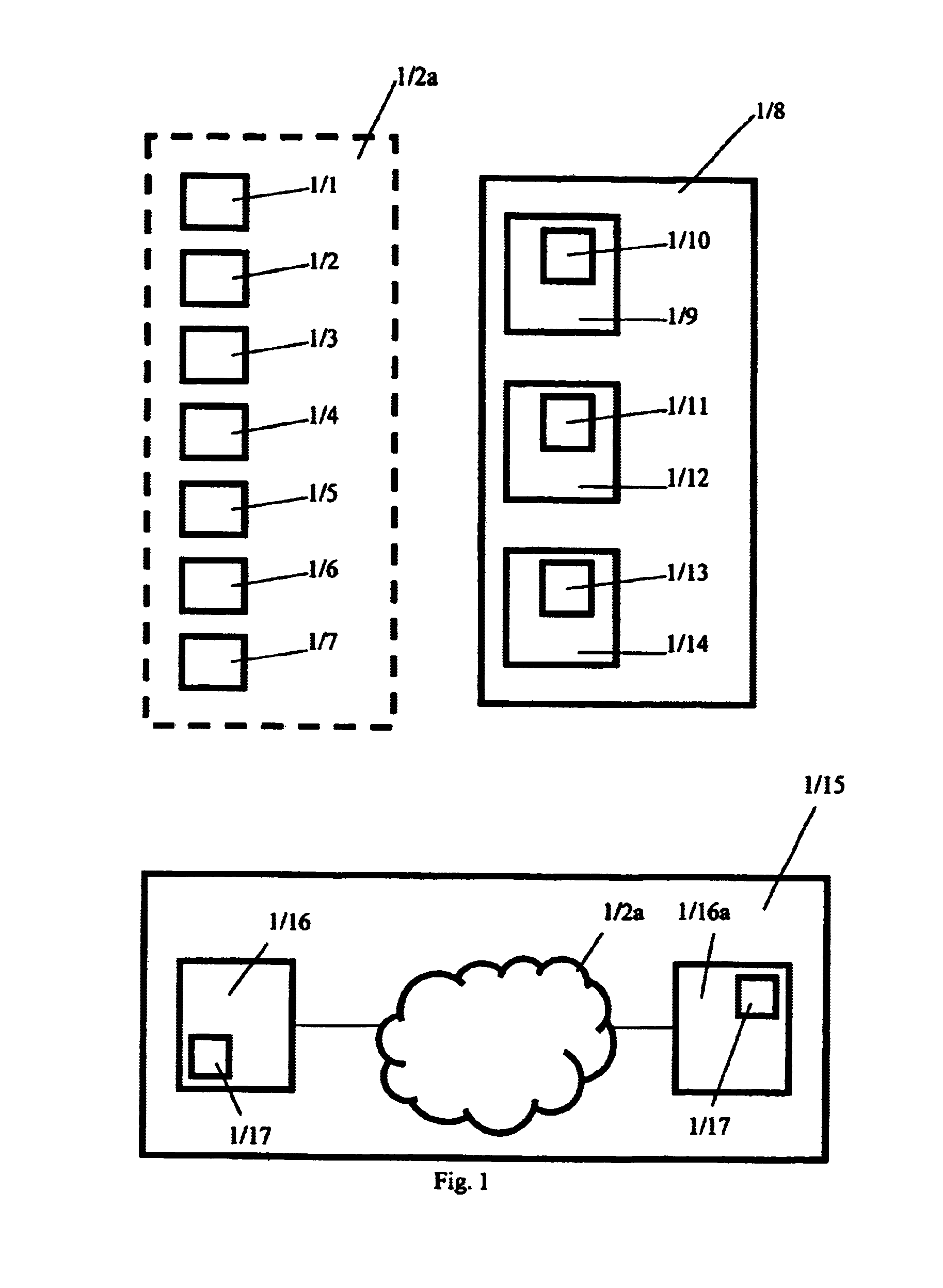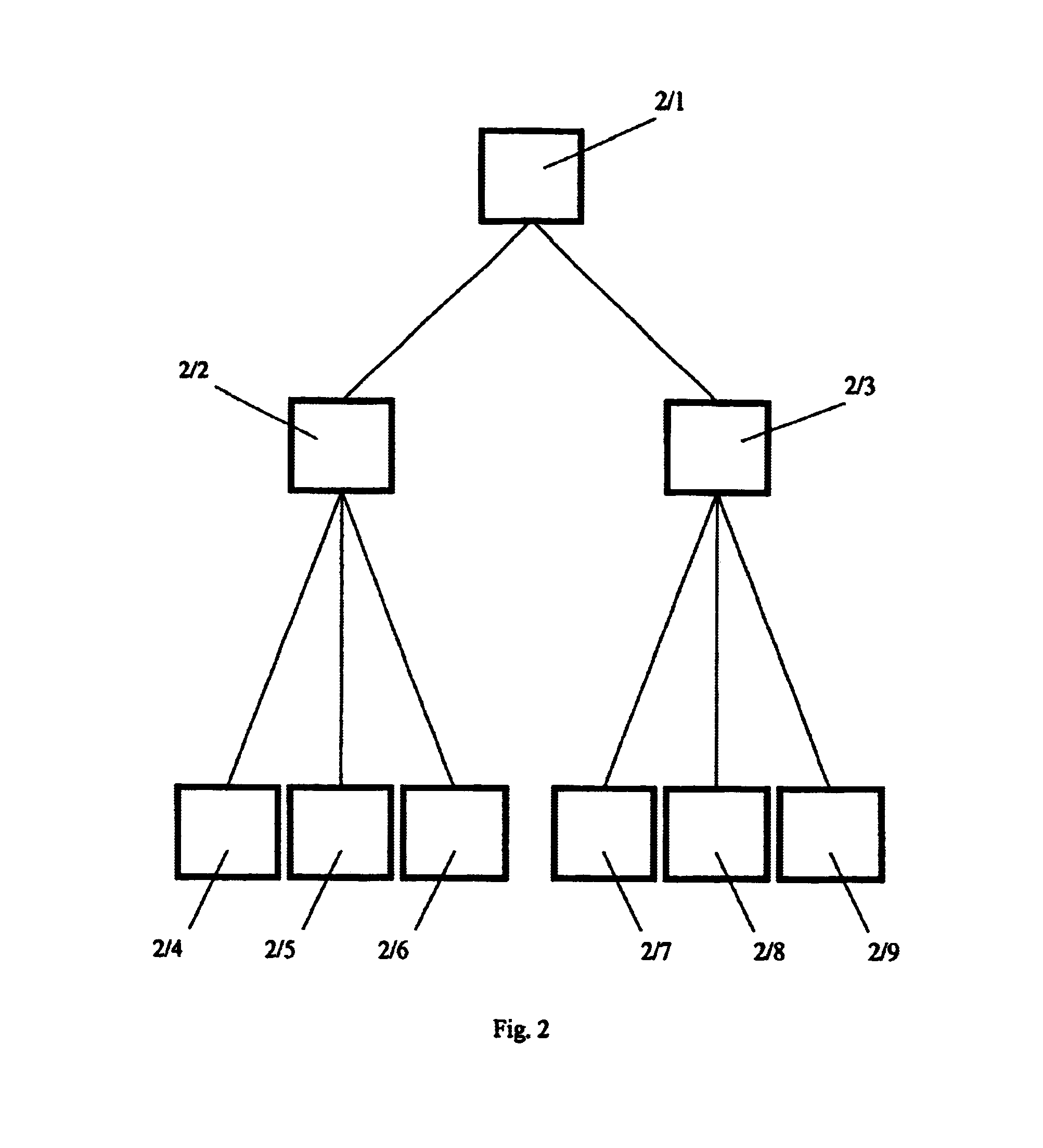Knowledge-engineering protocol-suite
- Summary
- Abstract
- Description
- Claims
- Application Information
AI Technical Summary
Benefits of technology
Problems solved by technology
Method used
Image
Examples
Embodiment Construction
[0531]Simply stated, the present invention relates to improving the quality of process control by using expert knowledge which facilitates constructing a topological process graph (often times a directed graph; also referred to as a process map), from the descriptions of at least one expert, or even from a composite collection of interviewing many involved workers (e.g. in situations where not even one expert study has ever been conducted.) At this juncture, there is a model of a system or process, not unlike models that are constructed in other modeling type systems (described above). FIG. 30 portrays a typical schematic knowledge-tree representation example of all or part of such a model. Other sample representations may be constructed automatically by running the prototype (of appendix 1) on a sample database (also in appendix 1) or on another database of equivalent form.
[0532]Since this model is independent of the level of detail that it describes and since this model may captur...
PUM
 Login to View More
Login to View More Abstract
Description
Claims
Application Information
 Login to View More
Login to View More - R&D
- Intellectual Property
- Life Sciences
- Materials
- Tech Scout
- Unparalleled Data Quality
- Higher Quality Content
- 60% Fewer Hallucinations
Browse by: Latest US Patents, China's latest patents, Technical Efficacy Thesaurus, Application Domain, Technology Topic, Popular Technical Reports.
© 2025 PatSnap. All rights reserved.Legal|Privacy policy|Modern Slavery Act Transparency Statement|Sitemap|About US| Contact US: help@patsnap.com



